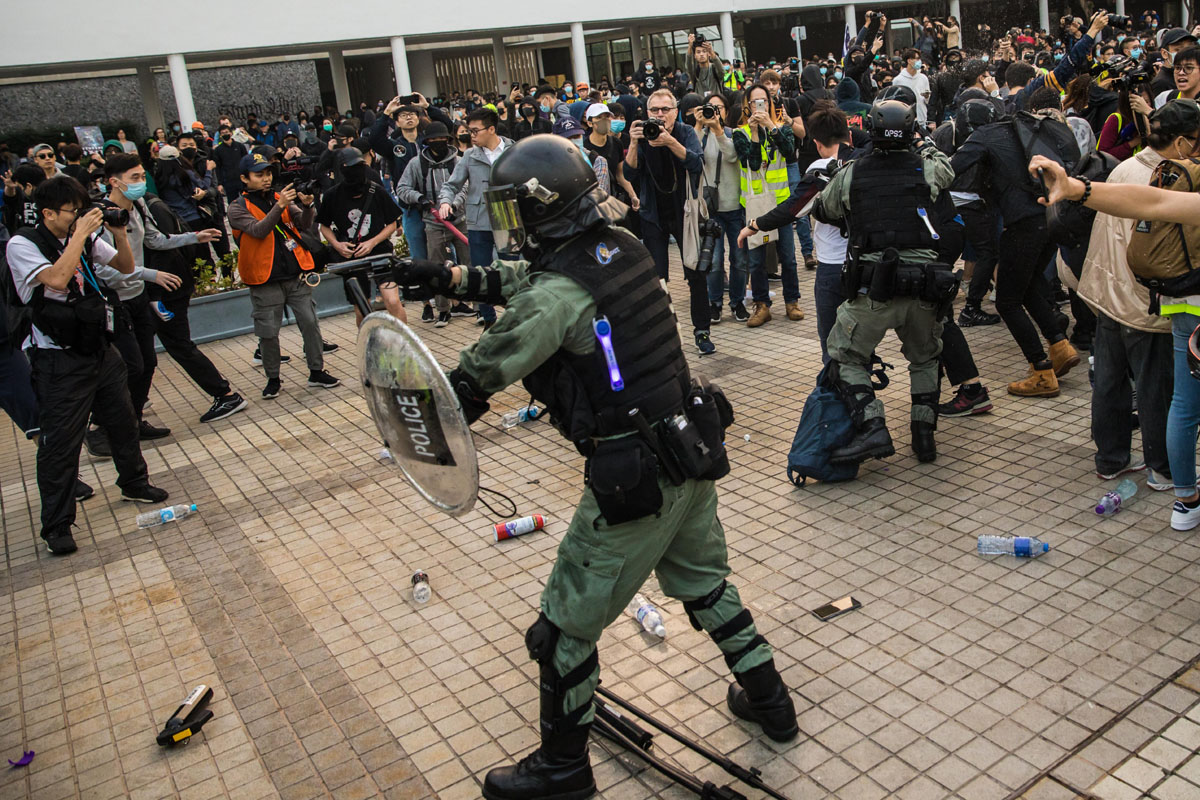Archery World Cup : Indian men’s recurve team wins gold . Deepika Kumari bags silver
India also clinched the mixed team recurve bronze as Ankita Bhakat and Dhiraj finished the meet with eight medals - five gold, two silvers and one bronze.
Beijing claims it is providing vocational training to help stamp out separatism and to teach new skills.

A police officer points a pistol during a rally in Hong Kong on December 22, 2019 to show support for the Uighur minority in China. Hong Kong riot police broke up a solidarity rally for China's Uighurs on December 22 -- with one officer drawing a pistol -- as the city's pro-democracy movement likened their plight to that of the oppressed Muslim minority. (DALE DE LA REY / AFP)
China’s persecution of the Uighur Muslim minority had its riotous echo in embattled Hong Kong on Sunday, affording a new dimension to the prolonged upheaval in China’s protectorate. If the Uighurs are being repressed with brutal severity, Hong Kong’s riot police, as often as not beefed up by the People’s Liberation Army, peppersprayed protesters to disperse crowds in the heart of the city’s financial district after a largely peaceful rally in support of China’s ethnic Uighurs turned chaotic.
Nonetheless, a resounding message was conveyed by the protesters to the Great Hall of the People, with the demonstrators carrying placards that read: “Free Uighur, Free Hong Kong” and “Fake ‘autonomy’ in China results in genocide” ~ a pregnant one-liner that has succinctly summed up the enormity of the tragedy both in the mainland and the island nation. It is a lethal cocktail that has been punched with the demand for democratic freedom and the spirited protests against the persecution in China’s north-western Xinjiang province, recalling the repression of the Muslim Rohingyas.
The Uighurs too are a Muslim minority segment. From China to Myanmar, religion is the dominant theme of the narrative. It is pretty obvious that the protesters in Hong Kong are now up in arms against the persecution of the Uighurs in an effort to ratchet up the pressure on Carrie Lam’s dispensation, one that is remote-controlled by China’s President-for-life, Xi Jinping. According to the United Nations, at least one million Uighurs and members of other largely Muslim minority groups have been detained in camps in Xinjiang since 2017 under a campaign that has been condemned by the US and other countries.
Advertisement
Beijing claims it is providing vocational training to help stamp out separatism and to teach new skills. It denies any mistreatment of Uighurs. Such claims have served to obfuscate the core issue. Deceptive is the relative year-end lull in Hong Kong. Protests in the protectorate are in their seventh month. Many residents are angry at what they see as Chinese meddling in the freedoms promised to the former British colony when it returned to Chinese rule in 1997. China denies interfering and says it is committed to the “one country, two systems” formula put in place at that time and has blamed foreign forces for fomenting unrest.
It is direly imperative to reflect on the contrived dichotomy. On Saturday, Hong Kong riot police swept into several shopping centres, chasing off and arresting demonstrators pressing their demands in the peak shopping weekend before Christmas. The heavyhanded clampdown by the police on demonstrations and the frequent use of tear gas have incensed many protesters, whose demands include full democracy and an independent investigation into perceived police brutality. The crisis deepens with Sunday’s violent movement in solidarity with the Uighurs.
Advertisement